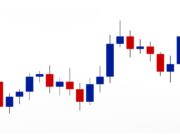The right stocks can make you rich and change your life.
The wrong stocks, though… They can do a whole lot more than just “underperform.” If only! They can eviscerate your wealth, bleeding out your hard-won profits.
They’re pure portfolio poison.
Surprisingly, not many investors want to talk about this. You certainly don’t hear about the danger in the mainstream media – until it’s too late.
That’s not to suggest they’re obscure companies – some of the “toxic stocks” I’m going to name for you are in fact regularly in the headlines for other reasons, often in glowing terms.
I’m going to run down the list and give you the chance to learn the names of three companies I think everyone should own instead.
But first, if you own any or all of these “toxic stocks,” sell them today…
Microchip Technology (NASDAQ: MCHP)
Time to Take Profits Amid High Valuation
Microchip Technology has had a solid run, but now might be the time to take some chips off the table. While the company’s fundamentals appear to have bottomed, the stock is currently trading at a historically high price-to-earnings (P/E) ratio, raising concerns about valuation. With the broader semiconductor sector facing a less optimistic outlook, MCHP’s premium valuation could limit further upside in the near term.
Truist Securities recently downgraded Microchip from Buy to Hold, slashing its price target from $89 to $80. This new target reflects a 24x multiple on revised 2025 EPS estimates of $3.33, down from $3.69. The downgrade highlights concerns that the recovery anticipated in 2025 is already priced into the stock, making significant gains from current levels more challenging.
Considering these valuation concerns and the tempered outlook on the semiconductor sector, it may be prudent to reduce exposure to Microchip Technology until there is clearer evidence of sustained growth.
Plug Power (NASDAQ: PLUG)
Struggling to Turn Promise into Profits
Plug Power has been making headlines with its ambitious goal to build the first commercially viable market for hydrogen fuel cell technology. However, the financials paint a much bleaker picture. In the second quarter, Plug posted revenue of $143.3 million, a significant drop from $260.1 million in the same period last year. Even more concerning is the company’s continued struggle with profitability, reporting an operating loss of $244.6 million—slightly worse than the $233.8 million loss a year ago.
Plug’s losses came in at 36 cents per share, a sign that despite deploying over 69,000 fuel cell systems and establishing more than 250 fueling stations, the company is far from being a viable business. Their projected full-year revenue range of $825 million to $925 million suggests little to no growth compared to last year’s $891 million, highlighting just how challenging the path ahead could be.
PLUG stock has tumbled 54% this year, reflecting market skepticism about the company’s ability to turn its technology into a profitable business. Until Plug Power can demonstrate a clear path to profitability, it may be best to avoid or sell this stock.
Analog Devices (NASDAQ: ADI)
Valuation Concerns and Slowing Growth Expectations
Analog Devices is another semiconductor stock that looks overvalued given the current market dynamics. The company’s fundamentals are thought to have hit a low, with a recovery projected for 2025. However, much of this anticipated growth seems to be baked into the current stock price, which is trading at a lofty 28x CY25 EPS—close to peak levels for the company.
Truist recently downgraded ADI from Buy to Hold, reducing the price target from $266 to $233, based on a 28x multiple that reflects a traditional 7x discount compared to its analog peers. Analysts note that while a significant recovery in revenue and EPS growth is expected in 2025, the market is already forecasting this recovery, leaving limited room for upside.
With the broader semiconductor sector entering a period of slower growth and ADI trading near peak valuation multiples, this could be a good opportunity to trim positions. Waiting for a better entry point or clearer growth signals could be a more prudent approach for long-term investors.






